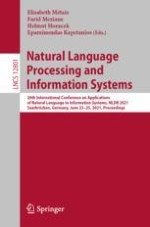2021 | OriginalPaper | Buchkapitel
Cross-Domain Transfer of Generative Explanations Using Text-to-Text Models
verfasst von : Karl Fredrik Erliksson, Anders Arpteg, Mihhail Matskin, Amir H. Payberah
Erschienen in: Natural Language Processing and Information Systems
Aktivieren Sie unsere intelligente Suche, um passende Fachinhalte oder Patente zu finden.
Wählen Sie Textabschnitte aus um mit Künstlicher Intelligenz passenden Patente zu finden. powered by
Markieren Sie Textabschnitte, um KI-gestützt weitere passende Inhalte zu finden. powered by
